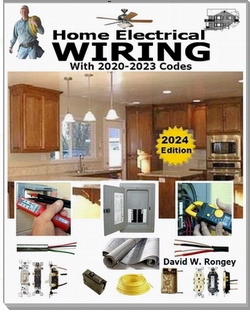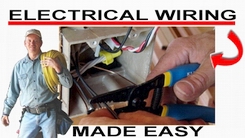Electrical Codes for Home Wiring

|
Summary: Electrical electrical-code articles covering afci-circuit, electrical-boxes, electrical-circuit, electrical-code-outlets, electrical-gfci, electrical-grounding, electrical-project, electrical-services, electrical-underground, electrical-wiring, electrical-wiring-code, lighting-code, smoke-detectors. © By: Dave Rongey |
Introduction to Electrical Codes for Outlets and Receptacles NEC 210-7 Receptacle outlets shall be of the grounding type, be effectively grounded, and have proper polarity. GROUND-FAULT PROTECTION Introduction to electrical codes for ground fault circuits and devices: NEC 210-8 At dwellings, ground-fault circuitinterrupter (GFCI) protection shall be provided for all receptacle outlets installed in bathrooms, garages, grade-level portions of unfinished accessory buildings, crawl spaces, unfinished basements, at kitchen countertops, wet-bar sinks, and outdoors. Electrical Grounding NEC 250.5 Grounding and Bonding Grounding and Bonding All grounding electrodes that are present at each building or structure served shall be bonded together to form the grounding electrode system. Electrical Services NEC 110.3 Written Electrical Correction All locations Failure to read the manufacturer's instructions. UNDERGROUND WIRING NEC 300-3 All conductors of the same circuit, including grounded conductors, shall be contained in the same raceway, cable, or trench. Wiring Methods NEC 110.12 Wiring Methods boxes Unused openings in boxes shall be effectively closed. Some of the Electrical Codes found on this website are from Code UpdatesUpdates based on the 2008 National Electrical Code Electrical Project Planning PLAN YOUR WIRING PROJECT ROUGH-IN INSPECTION A must be made before insulation, sheet-rock, paneling, or other materials cover any wiring. Smoke Detector Code Basics: Smoke Alarms |















